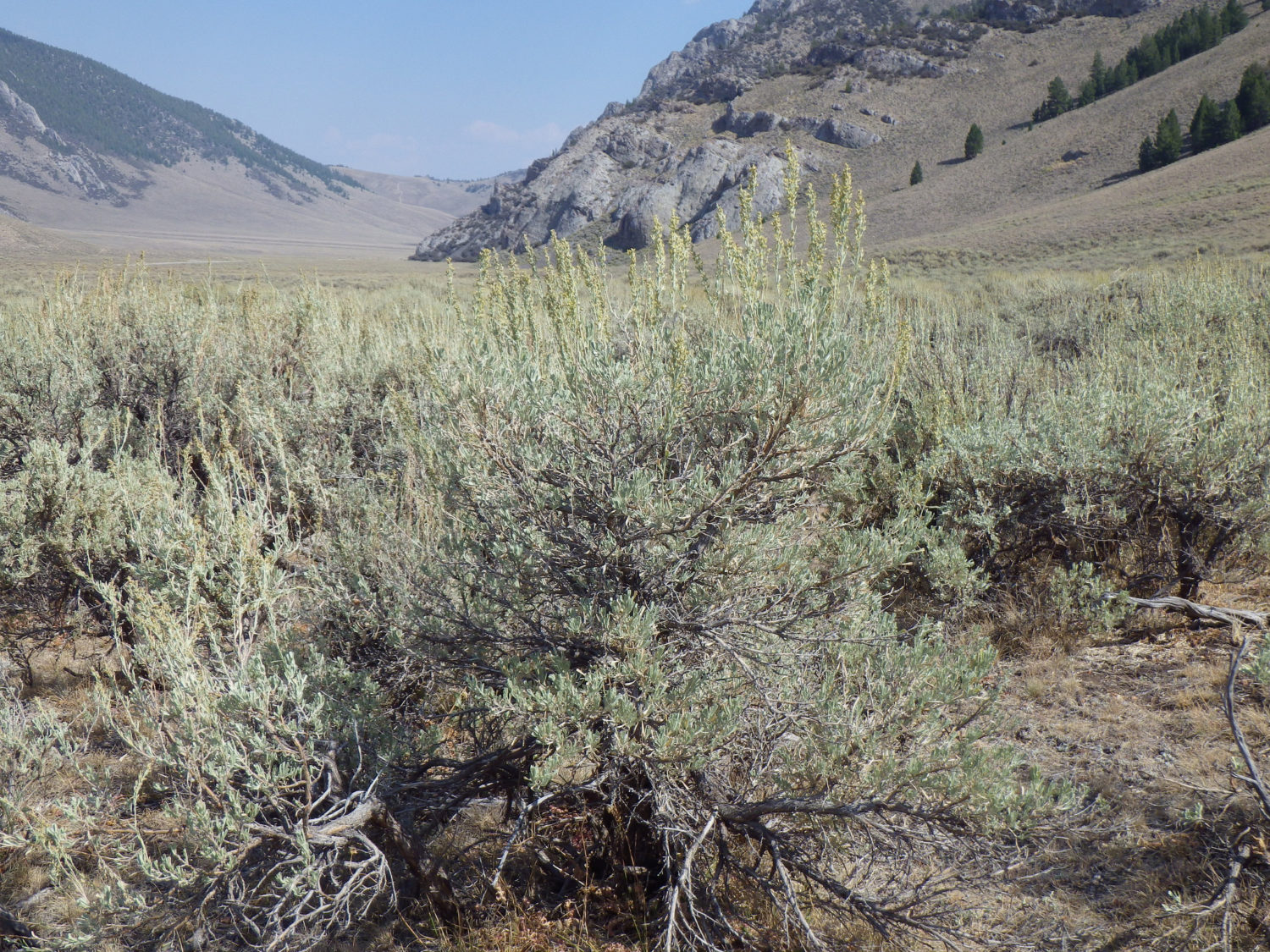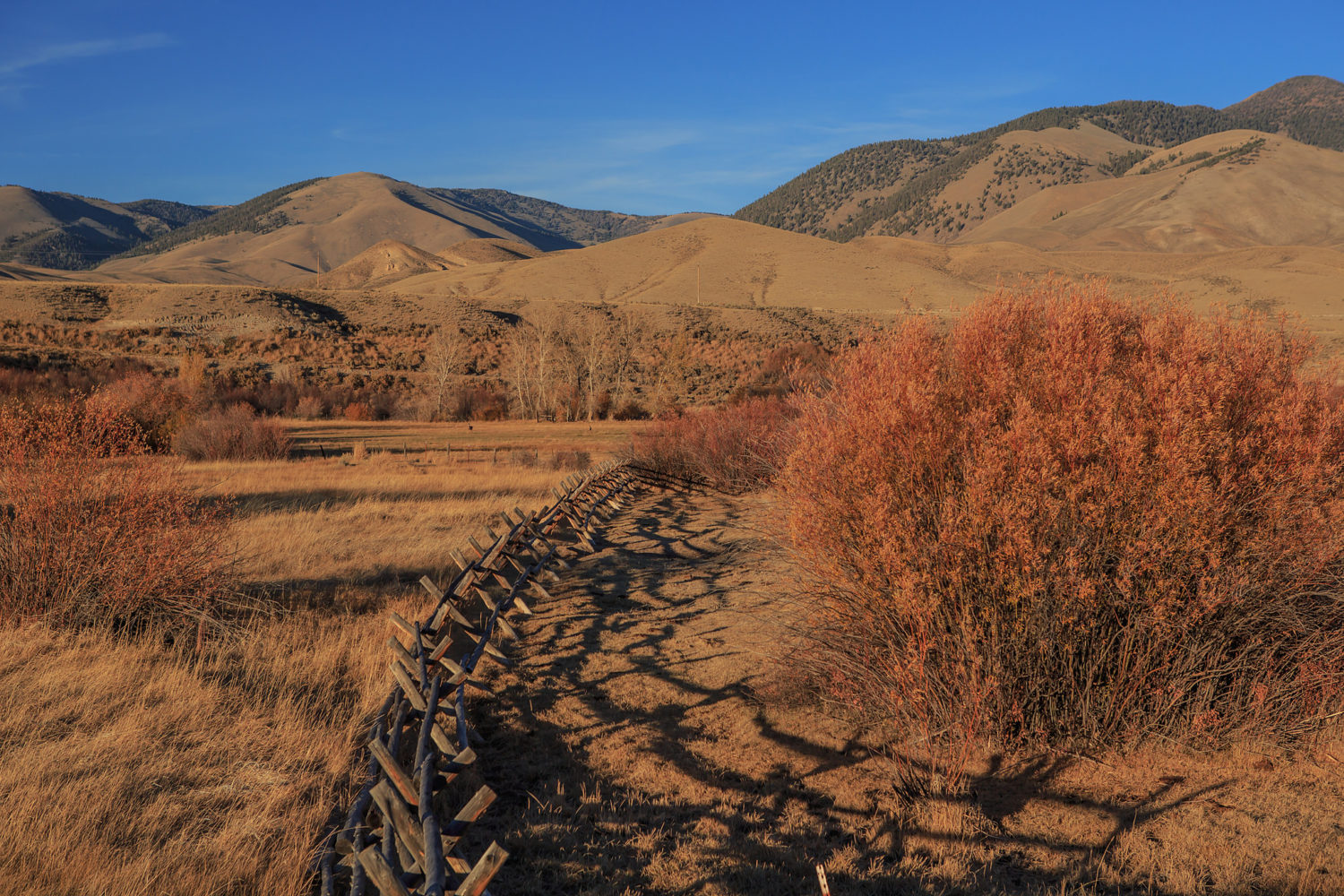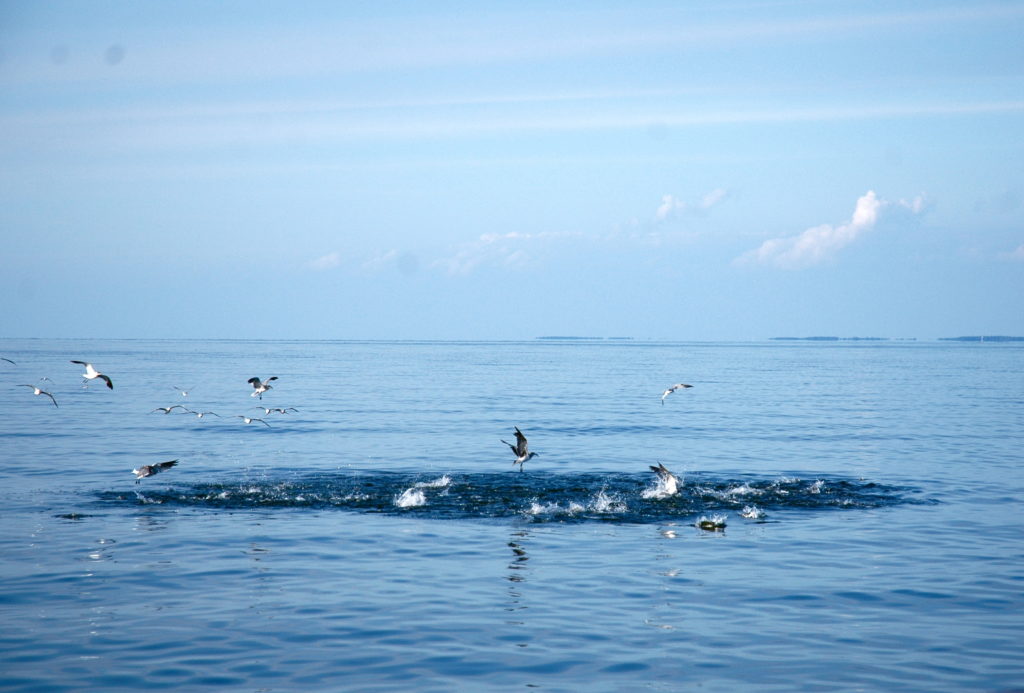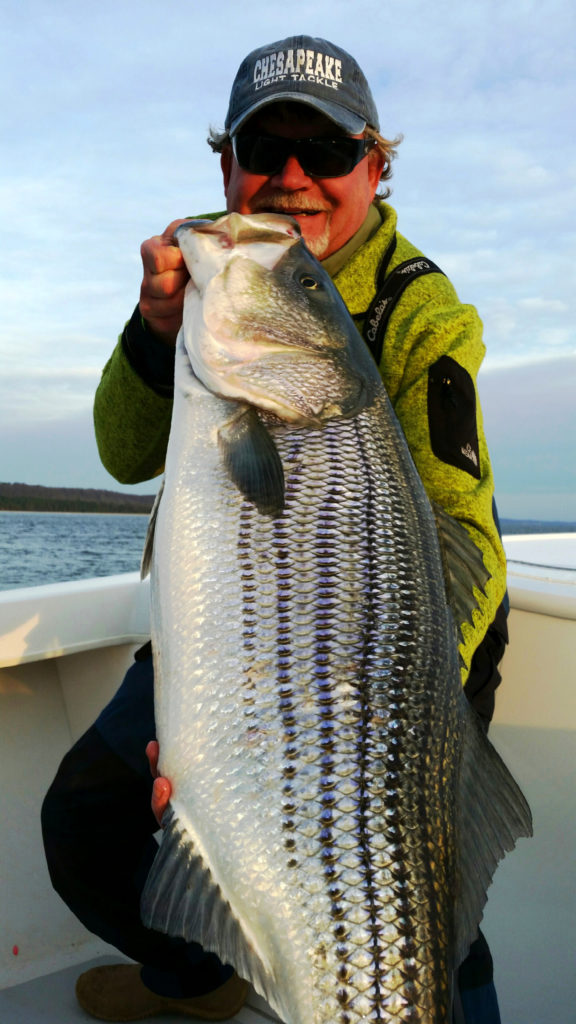Arizona DOT
Do you have any thoughts on this post?
Proper management and vast swaths of Forest Service and BLM public lands have led to an embarrassment of wildlife riches—a good problem to have—and their future will be shaped by the public
My buddy Jim Hardy and I call it the “Heart Hole.” It is a patch of timber, shaped roughly like a Valentine’s Day heart, which rests near the spine of the Rockies that separates Idaho and Montana. Inside miles of prime elk and deer habitat managed by the Salmon-Challis National Forest and the Bureau of Land Management’s Lemhi Field Office, the Heart Hole is overlooked by most hunters because the nearby drainages shine more brightly.
Learning the pattern of its elk, Hardy and I hunted in and around Heart Hole for the better part of 15 days last November. Toting traditional muzzleloaders, we participated in one of Idaho’s most sought after controlled hunts. Here, hunters choose to challenge themselves with a short-range weapon—thus limiting their success—in exchange for upholding management goals. The hunt’s 50 tags are spread over several hundred square miles, offering a near-pristine hunting opportunity where mature bulls are common and people are not.
Just the way we like it.

I think of Heart Hole on this quiet morning because the deadline to apply for one of Idaho’s premier elk, deer, and pronghorn tags is near, and my study of potential hunting areas is in full bloom. Normally, Heart Hole tops my wish list, but this year there is an embarrassment of elk in eastern and central Idaho and a new hunt piques my interest. It is in a different part of the High Divide and likely to be overlooked by hunters in the first year it’s offered.
My study of the regulations prompts a dilemma: Should I try for the Heart Hole hunt and benefit from last year’s knowledge, or should I take the better drawing odds and hunt in an area that is lousy with elk?
It is a vexing question, but a good problem to have. Most would be happy to have either of these choices, and I get to pick from both.
The Heart Hole hunt is 30 days; the other is 14. If I pick one, I’d know where the elk go to hide when pressured, and if I pick the other, I may run into the largest bull I’ve ever seen. The drawing odds are one in five for Hearts Hole and probably 50-50 in the new hunt, but it’s impossible to say.

Choices, questions, and theories bob about as I consider each hunt. Study of the maps, however, shows one commonality: Both areas are found on the largest and most remote swaths of BLM ground in eastern Idaho.
Both units are found along Idaho’s High Divide, which encompasses more than three million acres of BLM land, including the Sand Creek desert, the Donkey Hills, and the sagebrush benches over the Salmon River. These BLM public lands buffer five mountain ranges and make up critical seasonal ranges and migration routes for the region’s nine game species, all important to hunters.
BLM #publiclands in Idaho offer a good problem to have—but their future depends on public input Share on XThe management plans that help guide BLM in all of its decisions are decades old and in need of revision to ensure that the future of these unique landscapes is managed with the best science and public input. Revisions to the BLM Upper Snake plan should commence within a year. Planning for the Lemhi and Challis field offices will begin shortly after.
It is important for hunters and anglers to get involved in this public process and call for conservation of intact and undeveloped backcountry areas that are prized for hunting and wildlife habitat. I’d sure like to find myself in this conundrum year after year.
In the end, I pick Heart Hole because I know the pulse of the area, and I like having 30 days to hunt. I am a lucky man to be living in a time when public lands and proper hunting management offer so much.
For more information on the TRCP’s High Divide work, please reach out to Rob Thornberry, TRCP’s Idaho field representative, by emailing rthornberry@trcp.org.
Restoration efforts have helped the Bay earn an above-failing grade, but the tiny fish at the base of the system weren’t even evaluated
There’s nothing more exciting to a Chesapeake Bay angler than to see working birds off in the distance. It almost always means good fishing is ahead.
“Find the bait and you’ll find the fish,” is a phrase my father taught me, and one I’ve since passed on to my children and grandchildren. It especially holds true here on the Chesapeake Bay. Running and gunning with my family in a fast, open boat, while scanning the horizon for swooping and diving birds, is one of my favorite ways to spend a day on the water.
When rockfish are actively feeding, they push baitfish like bay anchovies and menhaden up to the surface. Sometimes the fish smash the hapless minnows a foot or more into the air. That makes them easy picking for the frenzied birds, which get so worked up that they’ll even take the bait right out of a fish’s mouth. Casting a brightly-colored lure into the melee will almost always catch fish.

Throughout the year I host fishing seminars in the Chesapeake Basin to give tips and advice on how to target rockfish. At one of my recent seminars, an angler asked for my thoughts on the most important environmental factors that contribute to good fishing. I rattled off four of them: bait fish, water quality, habitat, and the abundance of gamefish. It’s impossible to look at any one factor as more important than the others because they are all so intertwined—really good fishing in the Chesapeake Bay depends on the health of the entire ecosystem.
That’s why I follow The University of Maryland Center for Environmental Science’s annual Chesapeake Bay report card with such interest. The goal is to evaluate all of those factors, and more, when assessing the health of the Bay.
It’s time to get serious about our Chesapeake Bay ecosystem and the shared resources we all enjoy. Share on XThis year, the Center gave my treasured estuary an overall grade of ‘C.’ That’s average—better than failing, but hardly cause for celebration. That’s why I was surprised to hear the cheers coming from some of our government agencies and environmental support groups. I know we’ve made progress, especially in areas like improved water clarity and bay grass growth, but a ‘C’ is still so far from where we need to be.
It’s right to take credit for improvements, but instead of cheering, we should see this average grade as a reminder of the challenges we face—and how much more work there is to be done.
At the same time, the report card gave Chesapeake Bay fisheries a surprisingly high grade of 90 percent, despite a general consensus among recreational fishermen that the spring 2017 trophy striped bass season was the worst in recent memory. Many anglers I talk with say big fish catches have been declining steadily in the past decade, which makes the report card’s failure to evaluate the strength of the menhaden population—the stripers’ main food source—all the more puzzling.

It’s inconceivable that an otherwise comprehensive assessment of the Bay’s ecosystem would not include an accounting for what has been described as “the most important fish in the sea.” Menhaden are the favorite forage fish for mature rockfish, and a vital component of the Chesapeake Bay’s ecosystem. In addition, menhaden are literally water cleaning machines. While eating plankton that causes algae blooms, one adult menhaden can filter 2.4 gallons of water every minute.
The link between healthy and abundant menhaden stocks and plentiful rockfish and other popular sportfish is undeniable, which is why sportfishing groups and anglers have been pushing federal and state fisheries managers for more than a decade to consider regulations that would help ensure abundant menhaden and other important forage stocks.
The Atlantic States Marine Fisheries Commission, the organization that manages our shared fisheries resources, is currently considering an ecosystem management amendment for menhaden. A new approach would factor in the menhaden’s critical role in the ecosystem as prey and efficient water cleaners. This is an effort that recreational anglers up and down the East Coast should support.
The effort to conserve menhaden has been a long and arduous process, but nearly every indication of success has been undercut by constant pressure to increase the harvest for menhaden and striped bass. Managers must move beyond this one step forward, two steps back approach to ensure a brighter future for baitfish, the species they support, and the Bay’s fishermen.
Even as the ASMFC has conceded that the spawning stock biomass for striped bass is down, commissioners were faced with a proposal to increase the rockfish harvest. While that effort failed, it illustrates the clear pressure on the Commission to increase harvests, even when the news on fish populations isn’t all that great.
If we don’t stop looking past short-term economics and do a better job of protecting our big spawning-class rockfish and the bait they eat, we are headed for disaster.
It’s time to get serious about our Chesapeake Bay ecosystem and the shared resources we all enjoy. The Bay is being challenged on every front. My hat is off to the University of Maryland for the work they’re doing in evaluating the health of the Bay, but you won’t find me celebrating the overall ‘C’ grade or even that debatable ‘A’ for fisheries.
We can and must do better.
Shawn Kimbro is an avid recreational angler and the author of two books about fishing in the Chesapeake Bay. A frequent speaker to fishing clubs, environmental groups, and conservation organizations, he is recognized across the Chesapeake region as a leading voice for stewardship within the fishing community.
What this unprecedented move could mean for America’s conservation legacy
Today, in accordance with an April 2017 executive order, Secretary of the Interior Ryan Zinke sent a memorandum to President Trump recommending that the Bears Ears National Monument in Utah be reduced in size. The Theodore Roosevelt Conservation Partnership responded to this unprecedented action with concern.
“If the president acts on the secretary’s recommendation, we will be heading into uncharted territory that could threaten the conservation legacy of Theodore Roosevelt and 15 other presidents, both Democrats and Republicans, who have created national monuments under the Antiquities Act,” says Joel Webster, director of Western lands for the TRCP. “No president of the modern era has ever attempted to significantly alter the boundaries of a national monument, and we believe executive branch actions to reverse or otherwise undermine a single monument would jeopardize the future of all monuments, including those that are important to the hunting and fishing community.”
“Everyone who uses and cares about public lands should be concerned about the precedent that could be set in the coming days or weeks,” says Webster. “If this ball gets rolling, who knows where it will end up? We strongly believe that if the administration wants a monument to be significantly changed, they should call on Congress to take it up.”
The public has until July 9 to comment on the DOI review process for 27 monuments that comprise roughly 11.3 million acres. Hunters and anglers are encouraged to go to sportsmensperspective.org to take action and share why monuments matter to the future of our outdoor traditions.
Over the course of three weeks, we’re highlighting some of the major conservation issues for Chesapeake Bay fisheries, some possible solutions, and what this means to sportsmen and women across the region. Last week, we talked about what Pennsylvania farmers have to do with Chesapeake Bay rockfish.
Home to the iconic striped bass and a stopover for more than one million migratory birds, the Chesapeake Bay has always been an important place for sportsmen and women. With pollution flowing into the watershed from a variety of sources covering a large geographic region, partnerships are key to tackling the issue of dirty water and degraded habitat.
Nearly 35 years ago the federal government and the states of Maryland, Pennsylvania, and Virginia signed an agreement recognizing the importance of cleaning up the Bay. Since 1998, a “State of the Bay” report card has been released every year, which grades the Bay’s health on things such as striped bass and forage fish populations.
Thanks to the efforts of many groups, as well as the federal, state, and local governments, the Bay has improved from a starting score of 27 percent to 54 percent in 2016. That’s a huge improvement, but there’s a long way to go. But now, Trump’s budget proposal suggests no further funding should be appropriated to a couple of major programs in the collaborative Chesapeake Bay restoration effort.
A detailed budget request, released on May 23, shows that President Trump will continue to push for steep cuts to conservation programs and agencies. Among other major changes for fiscal year 2018, the document proposes eliminating funding for the EPA’s Chesapeake Bay Program and Section 319 Nonpoint Source Management Program. These cuts have serious implications for Chesapeake Bay health.
The Chesapeake Bay Program is led by the EPA in partnership with state and local governments, nonprofits, and universities, and is one of the major funding mechanisms for Bay restoration. Two-thirds of the program’s funds go directly to state and local governments, in the form of grants, to help with watershed restoration and monitoring efforts, and support a wide-variety of projects.
For example, Chesapeake Small Watershed Grants can be used to help improve agricultural practices and restore habitat, and Innovative Nutrient and Sediment Reduction Grants support innovative solutions to reduce or eliminate nutrient and sediment pollution. To date, these two programs alone have helped restore more than 6,600 acres of wetlands and 1,670 miles of forested riparian buffers, install more than 320 miles of livestock exclusion stream fencing, re-connect over 245 miles of rivers and streams for fish passage, and established 279 acres of oyster reefs. That’s a lot of on-the-ground conservation.
The Section 319 Nonpoint Source Management Program helps achieve the goal of the Clean Water Act to “restore and maintain the chemical, physical, and biological integrity of the nation’s waters,” by providing grants and technical assistance to help state and local governments and nonprofits address pollution, including agricultural runoff.
Since its creation in 1987, the program has helped to partially or fully restore 674 waterbodies, including several in the Chesapeake Bay watershed. For example, Section 319 grants have been used to significantly decrease nitrogen pollution in the Corsica River and to improve fish habitat in Sligo Creek—both of which flow into the Chesapeake Bay.
These programs and others work in concert to slowly, but steadily, heal America’s largest estuary, however momentum depends on continued investments in conservation.
It’s important to remember that the President’s proposed budget doesn’t get enacted as-is because Congress holds the power of the purse, so these programs might not actually be completely gutted come fiscal year 2018. But the document does clearly elucidate, in writing, what kind of work the White House wants to bolster—and what they’re okay with ditching. It gives us a peek at executive priorities.
And if the President’s budget is any indication, we need to keep reminding lawmakers that cutting, reducing, or neglecting programs that strengthen fishing and hunting traditions won’t sit well with sportsmen and women.
Learn more about the budget and what farm bill programs are doing to help this watershed, then check back next week for the final post in this series about the tiny, but critical, forage fish at the center of the Chesapeake’s habitat challenges.
Header image Courtesy of the Chesapeake Bay Program/Flickr.
Theodore Roosevelt’s experiences hunting and fishing certainly fueled his passion for conservation, but it seems that a passion for coffee may have powered his mornings. In fact, Roosevelt’s son once said that his father’s coffee cup was “more in the nature of a bathtub.” TRCP has partnered with Afuera Coffee Co. to bring together his two loves: a strong morning brew and a dedication to conservation. With your purchase, you’ll not only enjoy waking up to the rich aroma of this bolder roast—you’ll be supporting the important work of preserving hunting and fishing opportunities for all.
$4 from each bag is donated to the TRCP, to help continue their efforts of safeguarding critical habitats, productive hunting grounds, and favorite fishing holes for future generations.
Learn More
